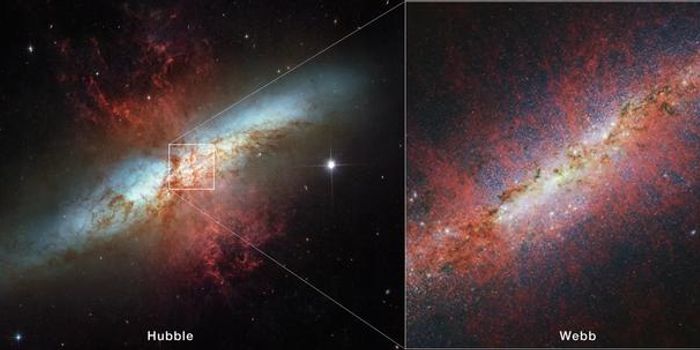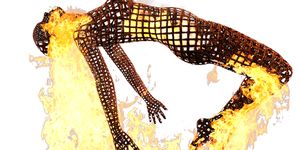Cosmic Radiation Events shed light on Norse Settlement in the Americas
A new open access study published in Nature yesterday showcases a relatively new method in archaeology. In an attempt to give precise dates to the famous Norse settlement, and UNESCO World Heritage site, of L’Anse aux Meadows in Newfoundland, researchers used known dates of cosmic radiation events combined with radiocarbon dating and dendrochronology.
Cosmic Radiation Events & Archaeological Dating
Neither radiocarbon 14 (14C), nor dendrochronological dating are new methods in archaeology, however, both rely on specific conditions to be useful to archaeologists. 14C is accumulated by living things while they are alive. As a method, radiocarbon dating measures the standard rate of radioactive decay of Carbon-14 in a plant or animal after that organism dies. That is to say, you cannot use 14C dating on a rock, since it was never alive.
Dendrochronology is the counting of annually formed tree-rings in artifacts or, more frequently, architectural features made from wood. By lining up the overlap in rings of a known species of tree with those rings on archaeological object made of wood, it is possible to literally count back in time to obtain a date on that object. While this is an extremely useful, tried-and-true method, it does require several conditions to work correctly. First, simply, you need objects made of wood at your site. Second, you need to know when that wooden object, or rather the tree that it came from, died. Finally, you need to have a comparative chronological sample to compare it to in order to match your objects rings to a known point in time.
Dendrochronological databases are species-specific, and cross referenced with 14C to establish extremely precise dates whenever possible. Normally, 14C production in dendrochronological samples happens at a standardized rate, however in the years 775 CE and 993 CE this normal rate increased from about 2% per year to 12% per year. This sudden, and brief, increase in 14C accumulation in these years has been attributed to cosmic radiation events that have been identified in global dendrochronological records in Japan, Russia, the Americas, and New Zealand. Therefore, when you find one of these increased 14C instances in your dendrochronological sample, it likely belongs to one of these two, known-year, events. Giving you the rare opportunity to date your archaeological site more precisely than previously thought.
L’Anse aux Meadows
The Icelandic Sagas describing the settlement of Greenland, and Leif Eriksson’s subsequent excursion to what is now likely Newfoundland, were written in the 13th-14th centuries, hundreds of years after the journeys would have taken place. While likely constructed from earlier oral histories, these sagas describe the settlement of Greenland by the Norse, their exploration south into Vinland, and their interactions with the already present Indigenous peoples of these regions. Evidence of Norse settlement in Greenland is well documented in the archaeological record, but evidence from the mysterious Vinland? That’s a bit more difficult.
From 1961-1968, Helge Ingstad and his wife Anne Stine Ingstad led expeditions along the coast of Newfoundland in an attempt to locate possible Norse settlements based off of the descriptions recorded in the sagas. They found the remains of eight turf-built structures, similar to those found in the earliest Norse settlements of Iceland and Greenland. These structures include three domestic dwellings, four workshops, and one forge. On further investigation archaeologists found about 800 Norse artifacts made of wood, bronze, bog iron, and soapstone. These finds confirmed Norse activity at L’Anse aux Meadows, but when exactly did this take place?
Early date ranges for the site, including radiocarbon dating, provided a range between the 8th and 11th centuries. The new study published yesterday by an international team from Canada, the Netherlands, and Germany, goes a step further into giving L’Anse aux Meadows a precise date. By identifying one of the abovementioned cosmic radiation events, the 993 CE event, in wooden samples from L’Anse aux Meadows, the research team feels confident in dating the site to 1021 CE.
Now I know what you’re thinking because I wondered the same. How do we know these wooden objects were made by the Norse and not local Indigenous people who had been episodically occupying the area for over 5000 years? First, the objects were found in the context of the Norse structures. Second, and honestly more reliably, these objects were cut or modified by the use of metal tools which were not used by the Indigenous people of this region at this time.
So, the wooden objects are Norse in origin and date to exactly 1021 CE. But if we already knew the Norse were there since excavations in the 1960s, why is this important now? To be frank, now we have an exact date for contact between peoples of European origins and the Indigenous peoples of North America beyond Greenland. As the research team states, “if these encounters indeed occurred, they may have had inadvertent outcomes, such as pathogen transmission, the introduction of foreign flora and fauna species, or even the exchange of human genetic information.”
Thanks to some cosmic radioactive events, we now have a point of reference for future archaeological investigations into this complex history.
Sources: Nature (2, 3), UNESCO, ScienceDirect, Cambridge University Press, The Viking Discovery of America


















































